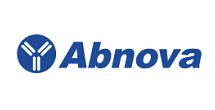FGFR2 & FGF10 Protein Protein Interaction Antibody Pair



* The price is valid only in USA. Please select country.
-
More Files
- More Functions
-
Specification
Product Description
This protein protein interaction antibody pair set comes with two antibodies to detect the protein-protein interaction, one against the FGFR2 protein, and the other against the FGF10 protein for use in in situ Proximity Ligation Assay. See Publication Reference below.

Reactivity
Human
Quality Control Testing
Protein protein interaction immunofluorescence result.
Representative image of Proximity Ligation Assay of protein-protein interactions between FGFR2 and FGF10. HeLa cells were stained with anti-FGFR2 rabbit purified polyclonal antibody 1:1200 and anti-FGF10 mouse monoclonal antibody 1:50. Each red dot represents the detection of protein-protein interaction complex. The images were analyzed using an optimized freeware (BlobFinder) download from The Centre for Image Analysis at Uppsala University.
Supplied Product
Antibody pair set content:
1. FGFR2 rabbit purified polyclonal antibody (100 ug)
2. FGF10 mouse monoclonal antibody (40 ug)
*Reagents are sufficient for at least 30-50 assays using recommended protocols.Storage Instruction
Store reagents of the antibody pair set at -20°C or lower. Please aliquot to avoid repeated freeze thaw cycle. Reagents should be returned to -20°C storage immediately after use.
-
Applications
In situ Proximity Ligation Assay (Cell)
-
Gene Info — FGF10
Entrez GeneID
2255Gene Name
FGF10
Gene Alias
-
Gene Description
fibroblast growth factor 10
Gene Ontology
HyperlinkGene Summary
The protein encoded by this gene is a member of the fibroblast growth factor (FGF) family. FGF family members possess broad mitogenic and cell survival activities, and are involved in a variety of biological processes, including embryonic development, cell growth, morphogenesis, tissue repair, tumor growth and invasion. This protein exhibits mitogenic activity for keratinizing epidermal cells, but essentially no activity for fibroblasts, which is similar to the biological activity of FGF7. Studies of the mouse homolog of suggested that this gene is required for embryonic epidermal morphogenesis including brain development, lung morphogenesis, and initiation of lim bud formation. This gene is also implicated to be a primary factor in the process of wound healing. [provided by RefSeq
Other Designations
keratinocyte growth factor 2|produced by fibroblasts of urinary bladder lamina propria
-
Gene Info — FGFR2
Entrez GeneID
2263Gene Name
FGFR2
Gene Alias
BEK, BFR-1, CD332, CEK3, CFD1, ECT1, FLJ98662, JWS, K-SAM, KGFR, TK14, TK25
Gene Description
fibroblast growth factor receptor 2
Gene Ontology
HyperlinkGene Summary
The protein encoded by this gene is a member of the fibroblast growth factor receptor family, where amino acid sequence is highly conserved between members and throughout evolution. FGFR family members differ from one another in their ligand affinities and tissue distribution. A full-length representative protein consists of an extracellular region, composed of three immunoglobulin-like domains, a single hydrophobic membrane-spanning segment and a cytoplasmic tyrosine kinase domain. The extracellular portion of the protein interacts with fibroblast growth factors, setting in motion a cascade of downstream signals, ultimately influencing mitogenesis and differentiation. This particular family member is a high-affinity receptor for acidic, basic and/or keratinocyte growth factor, depending on the isoform. Mutations in this gene are associated with Crouzon syndrome, Pfeiffer syndrome, Craniosynostosis, Apert syndrome, Jackson-Weiss syndrome, Beare-Stevenson cutis gyrata syndrome, Saethre-Chotzen syndrome, and syndromic craniosynostosis. Multiple alternatively spliced transcript variants encoding different isoforms have been noted for this gene. [provided by RefSeq
Other Designations
BEK fibroblast growth factor receptor|FGF receptor|OTTHUMP00000020621|OTTHUMP00000020629|bacteria-expressed kinase|hydroxyaryl-protein kinase|keratinocyte growth factor receptor|protein tyrosine kinase, receptor like 14|soluble FGFR4 variant 4
-
Interactome
-
Pathway
-
Disease
- +1-909-264-1399
+1-909-992-0619
Toll Free : +1-877-853-6098 - +1-909-992-3401
- sales@abnova.com














